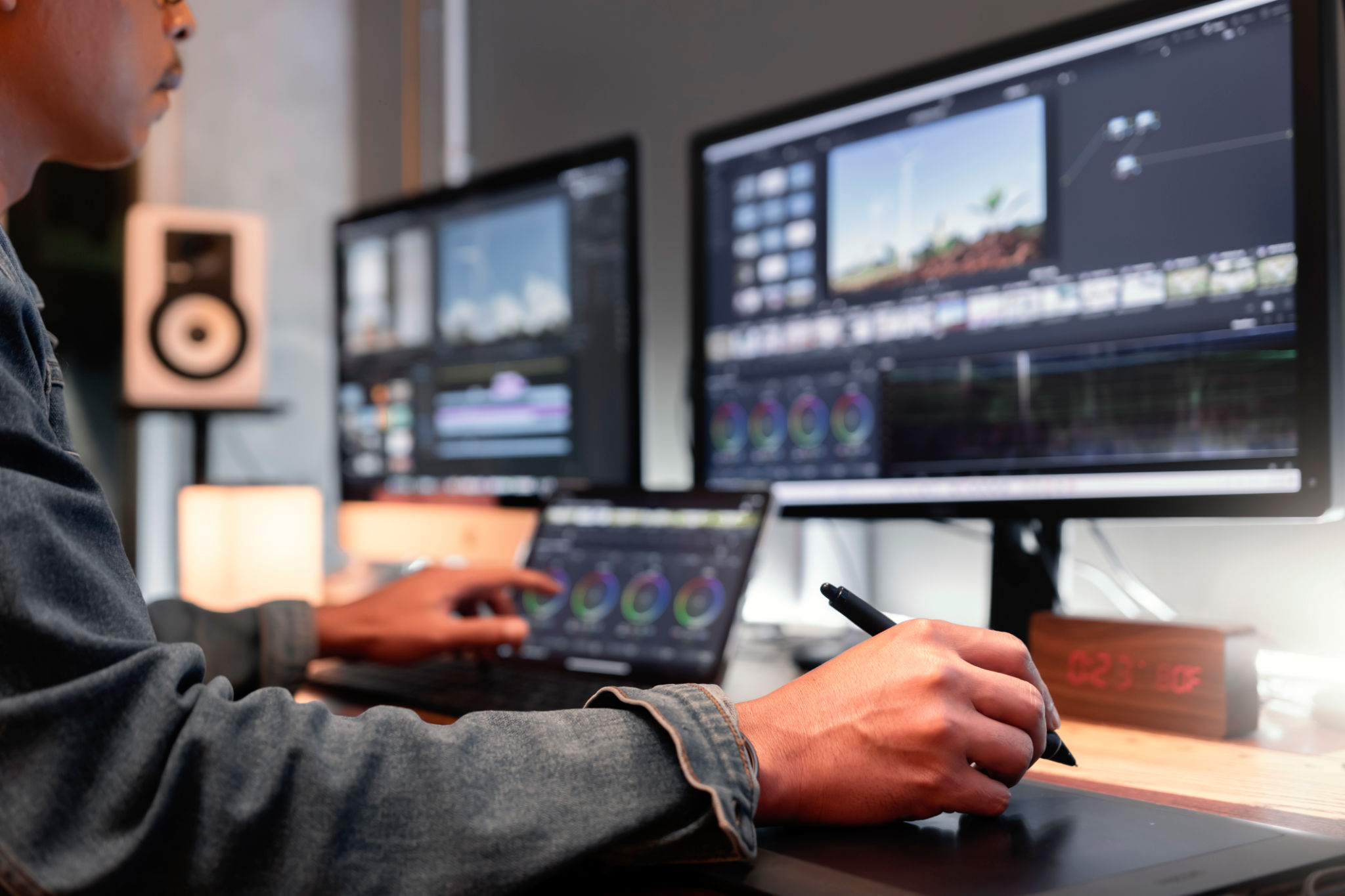The Art of Professional Video Editing: Transforming Raw Footage into Masterpieces
Understanding the Basics of Video Editing
Video editing is a crucial part of producing high-quality visual content. It involves the careful selection and arrangement of footage, the addition of effects and transitions, and the fine-tuning of audio to create a seamless and engaging narrative. At its core, video editing is about storytelling—taking raw footage and transforming it into a cohesive piece that communicates a message or tells a story effectively.
The process begins with understanding the project's goals and the audience's expectations. A professional video editor must be able to assess the raw footage critically and decide which elements will best serve the narrative. This requires not only technical skills but also a creative vision that can bring out the story's essence.

The Tools of the Trade
To excel in video editing, one needs to be familiar with the software tools that allow for precision and creativity. Programs like Adobe Premiere Pro, Final Cut Pro, and DaVinci Resolve are industry standards, offering a wide array of features that can enhance any project. These tools provide editors with the ability to manipulate images, sound, and graphics, ensuring that each element is perfectly integrated into the final product.
Beyond software, hardware also plays a significant role in video editing. A powerful computer with high processing capabilities, ample storage, and a high-quality display can make a significant difference in the efficiency and quality of the editing process.
Developing an Editing Style
Every editor brings their unique style to a project, which sets them apart in the industry. Developing an editing style involves experimenting with different techniques and discovering what best represents your creative vision. Some editors prefer quick cuts and dynamic transitions, while others lean toward smooth, flowing edits that create a more subdued atmosphere.

Building a portfolio that showcases a variety of styles can demonstrate an editor's versatility and capability. It's important to remain adaptable and open to new trends in video editing, as technology and audience preferences continually evolve.
The Importance of Collaboration
Video editing is rarely a solitary task. It often requires collaboration with directors, producers, cinematographers, and other creative professionals. Effective communication is key to ensuring that everyone's vision aligns and that the final product meets all expectations.
Working well within a team also involves being receptive to feedback. Constructive criticism can provide valuable insights and help refine an editor's skills. Embracing collaboration can lead to more innovative and successful projects.

Mastering Audio and Visual Effects
Beyond cutting footage, professional video editing involves mastering audio and visual effects. Sound design is crucial as it enhances mood, emphasizes key moments, and ensures clarity in dialogue. Using soundtracks and effects judiciously can elevate a video from good to great.
Visual effects add another layer of creativity. Whether it's correcting colors to enhance mood or adding graphical elements to support the narrative, these effects require both technical skill and artistic intuition.
Conclusion: The Journey to Mastery
The art of professional video editing is an ever-evolving journey. As technology advances and trends shift, editors must continuously learn and adapt their skills. It's a blend of technical prowess, creativity, and storytelling ability that transforms raw footage into masterpieces.
Ultimately, successful video editing is about more than just piecing together clips; it's about crafting an experience for the viewer—a story that resonates long after the credits roll.
